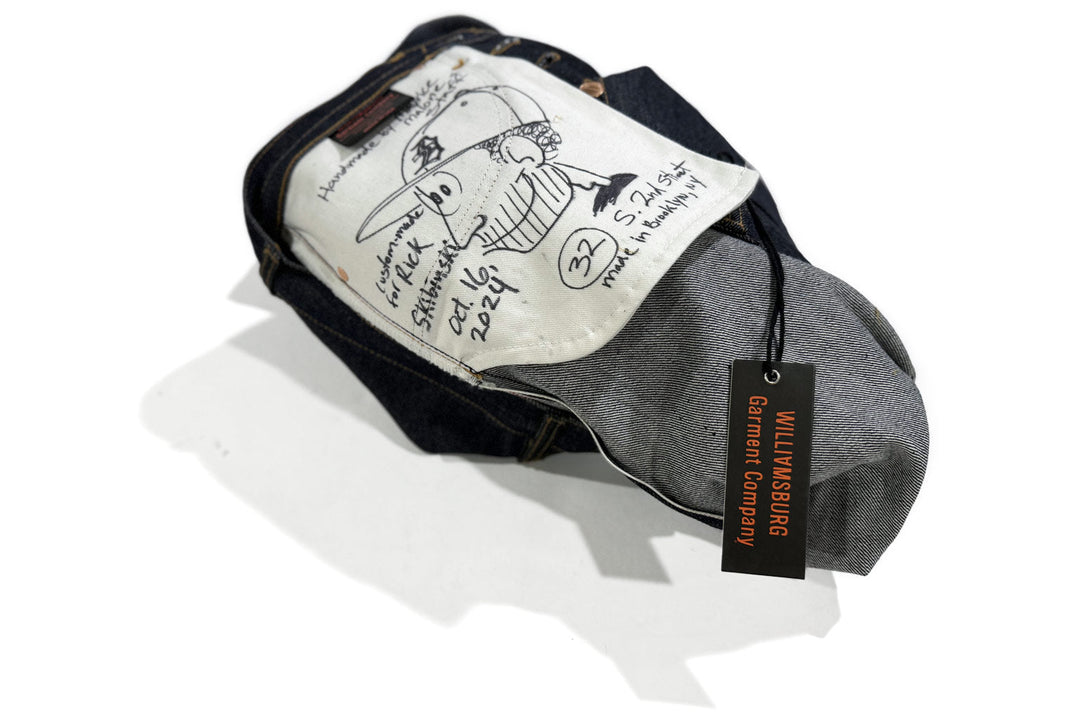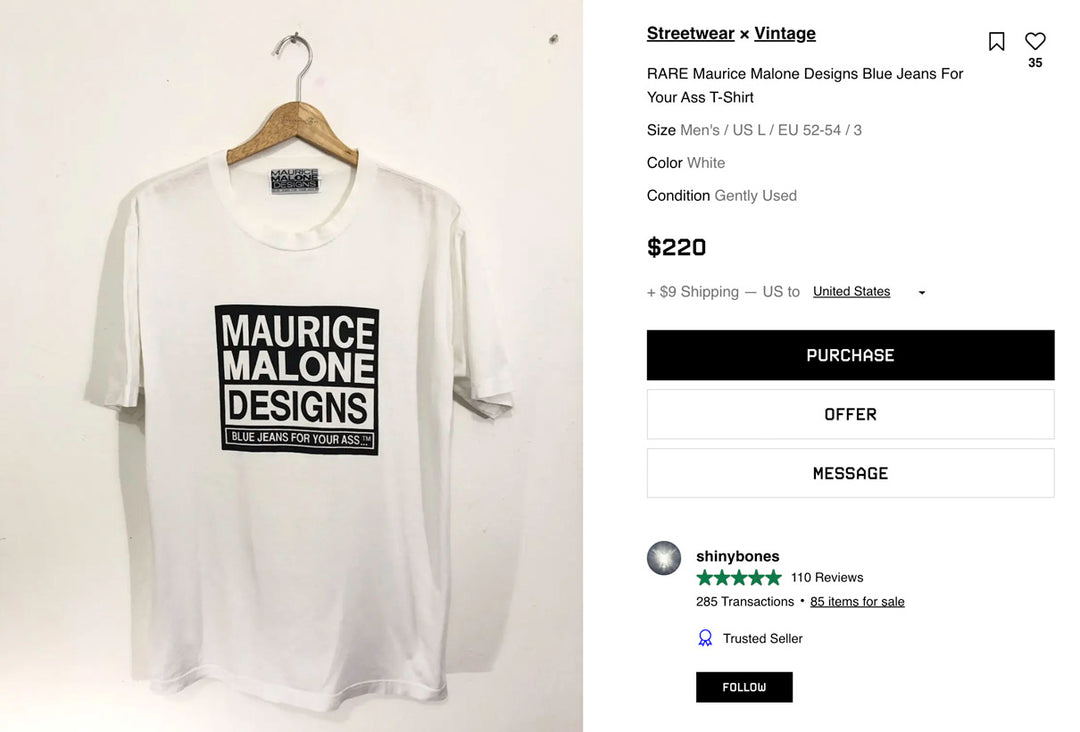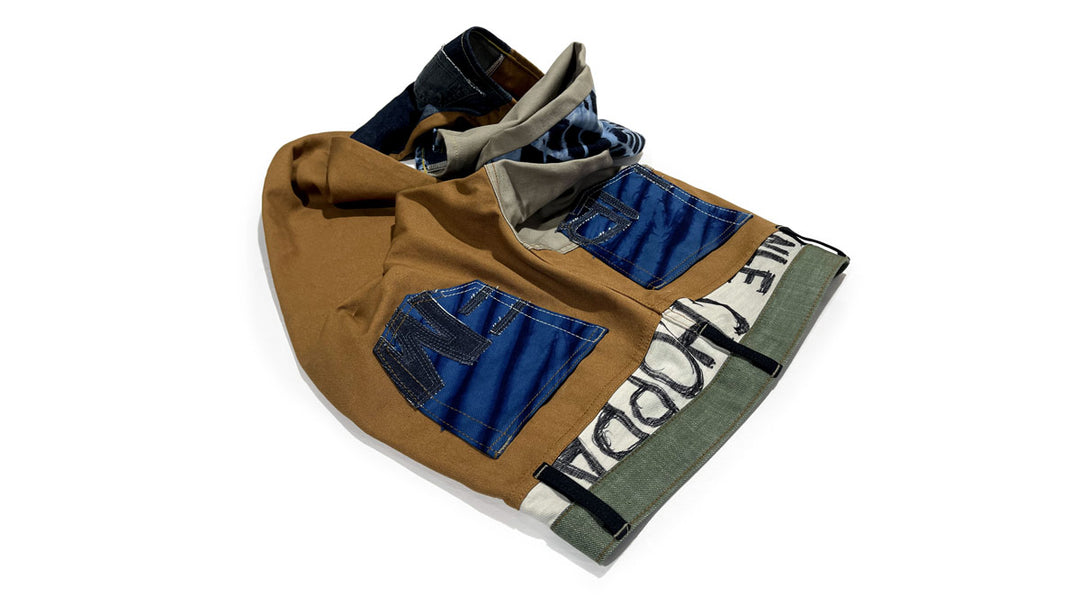I just Rip Sh*t 90s Advertisement: The Story of Blue Jeans For Your Ass...

From drawing batmobiles before grade school to setting trends in the nascent urban streetwear movement, my journey has always centered on breaking barriers and setting new standards. Inspired by fashion icons like Patrick Kelly and Jean-Paul Gaultier, who featured themselves in their own 1980s advertisements, I embraced the role of both creator and muse. This artwork, appearing in the pages of The Source and Beat Down magazines, was not merely a marketing tactic—it was a declaration of my arrival as hip-hop's bad boy of fashion, challenging the norms with bold, raw energy.
In the early 1990s, urban streetwear was just beginning to carve its niche in the fashion world. It was during this formative period that I found myself pushing the envelope, not only with my designs but also with how they were presented to the world.
The story of the Rip Sh*t advertisement

The story of this ad started in the late 1980s, when, after a financial setback in Detroit, I took a leap of faith and relocated to New York City. In the summer of 1989, I sought to immerse myself in the epicenter of the fashion industry, absorb its creative energies, and better learn the business. I was scribbling on the floor of my Brooklyn brownstone, which I shared with two female roommates, when I conceptualized my famous chainlink denim overalls and the slogan "Blue Jeans For Your Ass."
A few months after the move, a high school buddy would introduce me to a textile broker who agreed to finance a new brand with me. However, this new partner was skeptical, particularly about my innovative idea of gifting clothing to celebrities—a marketing strategy now commonplace but revolutionary at the time. He also dismissed my slogan, "Blue Jeans For Your Ass," as a non-starter for the market, stating the department stores would never buy it. His caution led us to a compromise, and together we launched "Label X by Maurice Malone," a brand that found its way into department stores and boutiques nationwide.
Despite this success, I sensed a stifling of my creative vision. By the fall of 1990, disillusioned with the constraints of partnership and craving the freedom to express my true artistic intent, I returned to Detroit. Back home, with few resources, I turned to what I knew best: the vibrant world of party promotions. These events grew from intimate gatherings into major hip-hop concerts, creating a sustainable funding stream that breathed new life into my fashion endeavors.
At these events, I set up tables displaying the very jeans and t-shirts I designed and crafted by hand during the week—now under the proudly reclaimed slogan "Blue Jeans For Your Ass." This direct engagement with the community not only fueled my business but also allowed me to reintroduce and assert the identity of my original slogan, "Blue Jeans For Your Ass." This time, it was on my terms, without compromise. The slogan, conceived in New York but brought to life in Detroit, resonated deeply with the inner-city youth. For them, it wasn’t just about fashion; it represented a tailored fit and a bold, unapologetic identity that spoke directly to their lifestyle and aspirations.
"Blue Jeans For Your Ass" transformed from a rejected tagline to a powerful emblem of my brand's ethos—championing individuality and defiance against the mainstream. In the process, I rebuilt my brand, grounded firmly in the authenticity and grassroots engagement that had first propelled me into the fashion industry. These experiences shaped not just my career but also my approach to fashion, highlighting the power of resilience and the importance of staying true to one’s vision.








Leave a comment